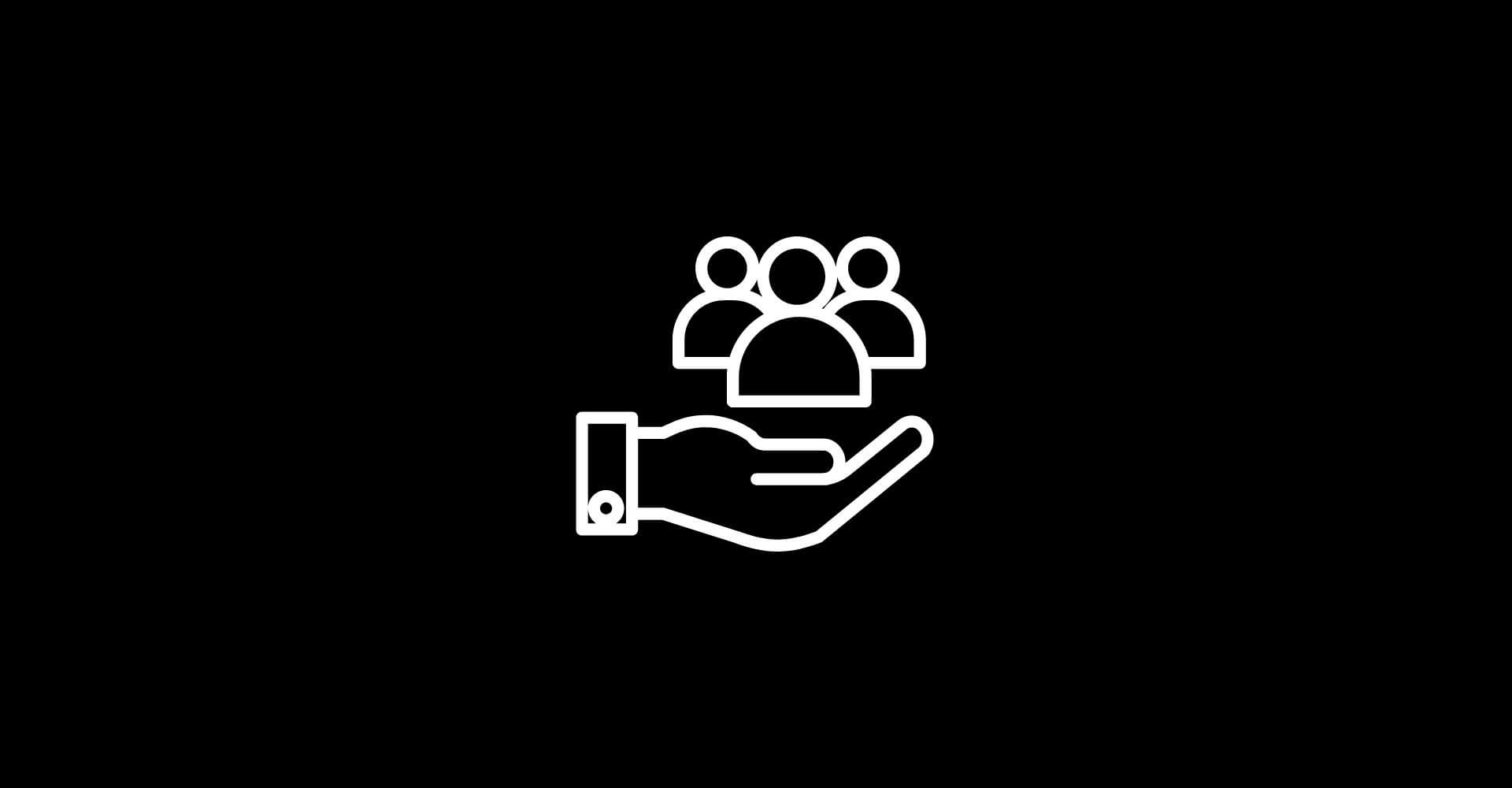A thriving workplace culture is vital for any successful business. It is the glue that holds employees together and drives productivity, creativity, and innovation. However, creating a positive work culture can be a challenge, especially in today’s fast-paced and ever-evolving business world. To stay ahead of the game, it’s important to keep up with the latest trends in workplace culture. In this blog post, we’ll be discussing the key trends that are shaping the modern workplace and how you can implement them to build a thriving culture in your organization. From promoting work-life balance and emphasizing employee wellness to fostering a sense of community and embracing diversity and inclusion, we’ll cover the essential components of a positive workplace culture that will help your business thrive.
Introduction to workplace culture and its importance
Workplace culture has emerged as a crucial factor in driving the success and growth of organizations. It encompasses the values, beliefs, behaviors, and attitudes that shape the work environment and interactions among employees. In today’s competitive business landscape, organizations are increasingly recognizing that a thriving workplace culture is not just a nice-to-have, but a strategic imperative.
A positive workplace culture fosters employee engagement, satisfaction, and productivity. It creates a sense of belonging and purpose, where employees feel valued, motivated, and empowered to contribute their best. It promotes collaboration, innovation, and a shared commitment to organizational goals. Furthermore, a strong workplace culture attracts and retains top talent, enhancing recruitment efforts and reducing turnover.
In contrast, a toxic or unhealthy workplace culture can have detrimental effects on employee morale, mental health, and overall performance. It can lead to disengagement, high levels of stress, conflicts, and a lack of trust among team members. Such negative dynamics not only impact individual well-being but also hinder collaboration and impede organizational success.
Therefore, cultivating a thriving workplace culture is crucial for organizations of all sizes and industries. It requires intentional efforts from leaders and managers to create an environment that promotes positivity, inclusivity, and continuous learning. By investing in workplace culture, organizations can unlock the full potential of their employees, drive innovation, and achieve sustainable growth.
The evolving landscape of workplace culture
As businesses adapt to the ever-changing needs and expectations of their employees, the traditional hierarchical structures are giving way to more flexible and inclusive environments.
One of the key trends in the evolving workplace culture is the shift towards remote work. With advancements in technology and the increasing desire for work-life balance, more companies are embracing the idea of allowing their employees to work from anywhere. This not only provides flexibility and autonomy to the workforce but also opens up opportunities for companies to tap into a global talent pool.
Another important aspect of the changing workplace culture is the emphasis on employee well-being. Employers are recognizing the importance of prioritizing the physical, mental, and emotional health of their employees. This includes offering wellness programs, mental health support, flexible working hours, and creating a positive work-life balance.
Diversity and inclusion have also become central to building a thriving workplace culture. Companies are actively promoting diversity, equity, and inclusion in their hiring practices, leadership positions, and decision-making processes. They are fostering an environment where individuals from different backgrounds, perspectives, and experiences can come together, collaborate, and contribute their unique strengths.
The evolving workplace culture is characterized by a strong focus on employee development and continuous learning. Companies are investing in training programs, mentorship opportunities, and career growth initiatives to empower their employees and nurture their talents. This not only helps in retaining top talent but also fosters a culture of innovation and growth.
Remote work and its impact on workplace culture
With advancements in technology and the current global situation, many companies have shifted towards remote work arrangements. This shift has reshaped the traditional office environment and brought about significant changes in how businesses operate and foster their workplace culture.
One of the key impacts of remote work on workplace culture is the need for effective communication and collaboration tools. With team members spread across different locations, it is crucial to have reliable platforms that facilitate seamless communication, virtual meetings, and project management. Companies are investing in tools like video conferencing software, instant messaging platforms, and project management systems to ensure that employees can connect and collaborate effortlessly, despite being physically apart.

Another aspect of remote work that influences workplace culture is the need for trust and autonomy. When employees are not physically present in the office, managers must rely on trust and give employees the freedom to work independently. This shift towards a results-oriented approach rather than a time-based one can foster a culture of trust and empowerment. Employees feel valued and trusted when given the autonomy to manage their own schedules and deliverables.
Remote work has led to a blurring of boundaries between work and personal life. With the office being just a few steps away, it can be challenging for employees to disconnect and maintain a healthy work-life balance. Employers need to prioritize employee well-being by encouraging regular breaks, promoting flexible work hours, and establishing clear boundaries between work and personal time. This focus on work-life balance not only contributes to a positive workplace culture but also helps prevent burnout and enhances overall productivity.
Remote work also opens up opportunities for diverse talent acquisition and inclusion. Companies are no longer limited to hiring locally and can tap into a global talent pool. This diversity of perspectives and experiences can enrich the workplace culture, fostering innovation and creativity. Embracing remote work allows organizations to build a more inclusive and diverse workforce, contributing to a thriving workplace culture.
Flexibility and work-life balance as key trends in workplace culture
Gone are the days when employees were expected to dedicate their entire lives to work, sacrificing personal time and relationships. Companies now recognize the importance of providing their employees with the flexibility to manage their work and personal lives effectively.
Flexibility in the workplace can take various forms, such as flexible working hours, remote work options, and the ability to choose where and how work gets done. This shift in mindset has been fueled by advancements in technology, which have made it easier than ever for employees to stay connected and productive outside of the traditional office setting.
Organizations that prioritize work-life balance understand that employees who feel supported in managing their personal obligations are more likely to be engaged, motivated, and productive at work. By encouraging a healthy work-life balance, companies foster a positive and harmonious atmosphere that promotes employee well-being and reduces burnout.
Flexible work arrangements can attract and retain top talent. In today’s competitive job market, candidates often seek out companies that offer a healthy work-life balance and the flexibility to adapt to their personal needs. By embracing these trends, organizations can position themselves as desirable employers and gain a competitive edge.
To implement flexible policies successfully, companies must establish clear guidelines, open lines of communication, and trust their employees to deliver results. Flexibility should be a two-way street, where employees understand their responsibilities and deliverables while having the freedom to manage their work in a way that suits their individual needs.
Diversity, inclusion, and belonging in the modern workplace
Embracing diversity means going beyond just ticking boxes or meeting quotas. It means actively seeking out and welcoming individuals from different ethnicities, races, genders, sexual orientations, ages, abilities, and socio-economic backgrounds. It’s about creating an environment where everyone feels valued, respected, and empowered to bring their whole selves to work.
Inclusion goes hand in hand with diversity, as it involves creating a sense of belonging and ensuring that everyone has an equal opportunity to thrive and contribute. This includes fostering a culture where diverse voices are heard, ideas are welcomed, and collaboration is encouraged. Inclusive workplaces go beyond simply tolerating differences; they celebrate and leverage them for the benefit of the organization and its employees.
Belonging takes the concept of inclusion a step further by focusing on the emotional and psychological aspect of feeling accepted and valued within a workplace. It’s about creating an environment where individuals feel a sense of connection, camaraderie, and purpose. When employees feel like they truly belong, they are more likely to be engaged, motivated, and committed to their work.
Organizations that prioritize diversity, inclusion, and belonging reap numerous benefits. They tend to have higher employee satisfaction, increased innovation and creativity, improved problem-solving, and enhanced decision-making. Moreover, diverse and inclusive workplaces are more attractive to top talent, leading to a more diverse and dynamic workforce.
To foster diversity, inclusion, and belonging, organizations should implement strategies such as unconscious bias training, diverse hiring practices, employee resource groups, mentorship programs, and inclusive leadership development. It’s also crucial to regularly assess and evaluate the effectiveness of these initiatives to ensure continuous improvement.
The rise of employee well-being and mental health support
As organizations recognize the impact of a healthy and happy workforce on productivity and overall success, there has been a significant rise in initiatives aimed at prioritizing employee well-being.
Employers are increasingly realizing that fostering a workplace culture that promotes mental health and supports employees’ overall well-being is not only the right thing to do but also a smart business strategy. This shift is driven by a growing awareness of the negative effects of stress, burnout, and mental health issues on employee engagement, retention, and overall performance.

Companies are implementing various strategies to support employee well-being and mental health. This includes offering flexible work arrangements, promoting work-life balance, providing access to counseling and therapy services, and creating a supportive and inclusive work environment that encourages open dialogue about mental health.
Employee wellness programs have gained popularity, incorporating activities such as mindfulness sessions, yoga classes, fitness challenges, and nutrition counseling. These initiatives not only help employees manage stress and improve their overall well-being, but they also foster a sense of community and camaraderie among colleagues.
Employers are investing in training and resources to raise awareness of mental health issues and equip managers with the tools to support their teams effectively. This includes providing training on recognizing signs of distress, fostering a culture of empathy and understanding, and offering resources for employees to seek professional help when needed.
The power of authentic leadership in shaping workplace culture
Gone are the days when leaders were seen as distant figures in corner offices, barking orders and making decisions without considering the impact on their employees. Today, employees crave leaders who are genuine, transparent, and empathetic.
Authentic leaders are those who lead with integrity, openly share their values and beliefs, and act in line with those principles. They are not afraid to show vulnerability and admit their mistakes. By doing so, they create an environment where trust and open communication can flourish.
In a workplace with authentic leadership, employees feel valued and respected. They are more likely to be engaged, motivated, and willing to go the extra mile for their organization. Authentic leaders lead by example, setting a high standard for ethical behavior and encouraging their teams to do the same.
Authentic leaders foster a culture of inclusivity and diversity. They recognize the unique strengths and perspectives that each employee brings to the table and create an environment where everyone feels heard and valued. This not only enhances creativity and innovation but also strengthens team dynamics and collaboration.
Leadership also extends beyond the confines of the office. Leaders who are genuine and true to themselves inspire their employees to bring their whole selves to work. They encourage work-life balance and support their employees’ personal growth and well-being.
The role of technology in fostering a thriving workplace culture
With the advent of various technological advancements, organizations have the opportunity to enhance communication, collaboration, and employee engagement like never before.
One of the key trends in leveraging technology for workplace culture is the implementation of digital communication tools. These tools, such as instant messaging platforms, project management software, and video conferencing solutions, enable seamless and real-time communication among team members, regardless of their geographical location. This fosters a sense of connectivity and inclusivity, breaking down barriers and promoting a collaborative work environment.
Another significant trend is the use of technology-driven employee recognition and feedback systems. Traditional annual performance reviews are being replaced by continuous feedback mechanisms facilitated by performance management software or mobile applications. This allows for timely recognition of achievements, constructive feedback, and goal tracking, creating a culture of transparency, growth, and continuous improvement.
Technology offers opportunities for remote work and flexible schedules, which have become increasingly important in today’s work landscape. With cloud-based tools and virtual collaboration platforms, teams can collaborate seamlessly even when working from different locations. This flexibility not only enhances work-life balance but also empowers employees to take ownership of their work, leading to increased productivity and satisfaction.
Technology plays a significant role in fostering employee well-being. The use of health and wellness apps, wearable devices, and digital platforms for mental health support enables organizations to prioritize the holistic well-being of their employees. These tools provide resources for stress management, mindfulness, fitness tracking, and access to remote counseling services, promoting a culture of overall wellness and work-life integration.
It’s important to note that while technology is a powerful enabler, it should be used strategically and in alignment with the organization’s values and goals. The human element remains essential in building a thriving workplace culture, and technology should complement and enhance human connections rather than replace them.
The impact of social and environmental responsibility on workplace culture
One major trend to watch is the growing emphasis on sustainability practices. Employees are increasingly seeking out organizations that prioritize eco-friendly initiatives, such as reducing carbon footprints, promoting recycling and waste reduction, and supporting renewable energy sources. By implementing these practices, companies not only contribute to a healthier planet but also foster a sense of purpose and pride among employees, leading to a more positive and motivated workplace culture.
Social responsibility is playing a significant role in shaping workplace cultures. Employees are looking for organizations that actively support diversity, inclusion, and equality. Companies that prioritize creating a safe and inclusive environment, offer equal opportunities for growth and advancement, and actively engage in community outreach initiatives are more likely to attract and retain top talent. These initiatives not only boost employee morale but also contribute to a more harmonious and supportive workplace culture.
Aspect to consider is the influence of corporate social responsibility programs on workplace culture. Many companies are implementing initiatives that give back to their communities by supporting local charities, volunteering, or donating a portion of their profits to social causes. These programs not only create a positive impact on society but also foster a sense of purpose and fulfillment among employees. When employees feel that their work is making a difference beyond the bottom line, they are more likely to be engaged and committed, leading to a thriving workplace culture.
Conclusion
As the workforce evolves, it’s crucial for organizations to be aware of the key trends shaping workplace culture. By staying informed and implementing these trends, you can create an environment where employees thrive, productivity soars, and retention rates skyrocket. Building a thriving workplace culture is an ongoing process, so be open to adapting and incorporating new trends as they emerge. Here’s to fostering a positive and thriving workplace for all!






